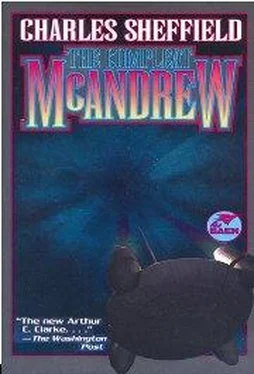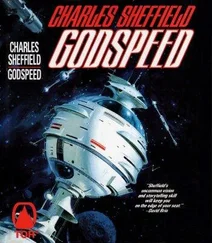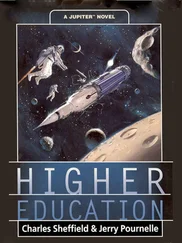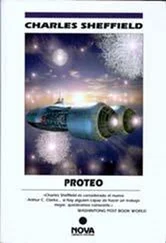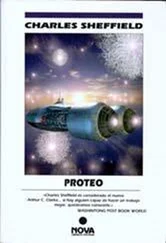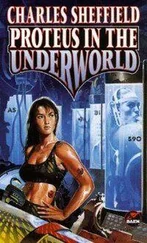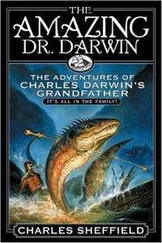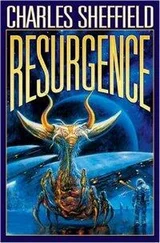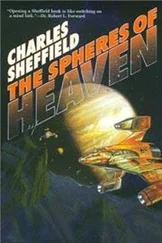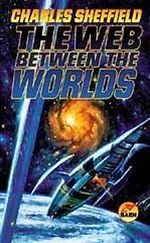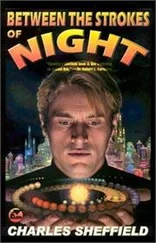So maybe there is no fiction at all in the sixth chronicle — just a little pessimism about how long it will take before someone builds a Geotron.
* * *
The Halo beyond the known Solar System offers so much scope for interesting celestial objects of every description that I assume we will find a few more there. In the second chronicle, I introduced collapsed objects, high-density bodies that are neither stars nor conventional planets. The dividing line between stars and planets is usually decided by whether or not the center of the object supports a nuclear fusion process and contains a high density core of “degenerate” matter. Present theories place that dividing line at about a hundredth of the Sun’s mass — smaller than that, you have a planet; bigger than that you must have a star. I assume that there are in-between bodies out in the Halo, made largely of degenerate matter but only a little more massive than Jupiter.
I also assume that there is a “kernel ring” of Kerr-Newman black holes, about 300 to 400 AU from the Sun, and that this same region contains many of the collapsed objects. Such bodies would be completely undetectable using any techniques of present-day astronomy. This is science fiction, not science.
Are rogue planets also science fiction? This brings us to Vandell’s Fifth Problem , and the seventh chronicle.
David Hilbert did indeed pose a set of mathematical problems in 1900, and they served as much more than a summary of things that were “hard to solve.” They were concise and exact statements of questions, which, if answered, would have profound implications for many other problems in mathematics. The Hilbert problems are both deep and difficult, and have attracted the attention of almost every mathematician of the twentieth century. Several problems of the set, for example, ask whether certain numbers are “transcendental” — which means they can never occur as solutions to the usual equations of algebra (more precisely, they cannot be roots of finite algebraic equations with algebraic coefficients). These questions were not disposed of until 1930, when Kusmin and Siegel proved a more general result than the one that Hilbert had posed. In 1934 Gelfond provided another generalization.
At the moment there is no such “super-problem” set defined for astronomy and cosmology. If there were, the one I invented as Vandell’s Fifth Problem would certainly be a worthy candidate, and might take generations to solve. (Hilbert’s Fifth Problem, concerning a conjecture in topological group theory, was finally solved in 1952 by Gleason, Montgomery, and Zippin.) We cannot even imagine a technique, observational instrument or procedure that would have a chance of detecting a rogue planet. The existence, frequency of occurrence, and mode of escape of rogue planets raise many questions concerning the stability of multiple-body systems moving under their mutual gravitational attractions — questions that cannot be answered yet by astronomers and mathematicians.
In general relativity, the exact solution of the “one-body problem” as given by Schwarzschild has been known for more than 80 years. The relativistic “two-body problem,” of two objects orbiting each other under mutual gravitational influence, has not yet been solved. In nonrelativistic or Newtonian mechanics, the two-body problem was disposed of three hundred years ago by Newton. But the nonrelativistic solution for more than two bodies has not been found to this day, despite three centuries of hard work.
A good deal of progress has been made for a rather simpler situation that is termed the “restricted three-body problem.” In this, a small mass (such as a planet or small moon) moves under the influence of two much larger ones (stars or large planets). The large bodies define the gravitational field, and the small body moves in this field without contributing significantly to it. The restricted three-body problem applies to the case of a planet moving in the gravitational field of a binary pair of stars, or an asteroid moving in the combined fields of the Sun and Jupiter. It also offers a good approximation for the motion of a small body moving in the combined field of the Earth and Moon. Thus the problem is of practical interest, and the list of workers who have studied it in the past 200 years includes several of history’s most famous mathematicians: Euler, Lagrange, Jacobi, Poincaré, and Birkhoff. (Lagrange in particular provided certain exact solutions that include the L-4 and L-5 points, famous today as proposed sites for large space colonies.)
The number of papers written on the subject is huge — Victor Szebehely, in a 1967 book on the topic, listed over 500 references, and restricted himself to only the major source works.
Thanks to the efforts of all these workers, a good deal is known about the possible solutions of the restricted three-body problem. One established fact is that the small object cannot be thrown away to infinity by the gravitational interactions of its two large companions. Like much of modern astronomy, this result is not established by looking at the orbits themselves. It is proved by general arguments based on a particular constant of the motion, termed the Jacobian integral.
Unfortunately, those arguments cannot be applied in the general three-body problem, or in the N-body problem whenever N is bigger than two. It is presently conjectured by astronomers, but not generally proved, that ejection to infinity is possible whenever more than three bodies are involved. In such a situation, the lightest member of the system is most likely to be the one ejected. Thus, rogue planets can probably be produced when a stellar system has more than two stars in it. As it happens, this is rather common. Solitary stars, like the Sun, are in the minority. Once separated from its stellar parents, the chances that a rogue world will ever again be captured to form part of a star system are remote. To this point, the seventh chronicle’s discussion of solitary planets fits known theory, although it is an admittedly incomplete theory.
So how many rogue planets are there? There could conceivably be as many as there are stars, strewn thick across the Galaxy but completely undetectable to our instruments. Half a dozen may lie closer to us than the nearest star. Or they may be an endangered species, vanishingly rare among the varied bodies that comprise the celestial zoo.
In the seventh chronicle I suggest that they are rather common — and that’s acceptable to me as science fiction. Maybe they are, because certainly planets around other stars seem far more common than we used to think. Up to 1996, there was no evidence at all that even one planet existed around any star other than Sol. Now we know of a dozen or more. Every one is Jupiter’s size or bigger, but that does not imply that most planets in the universe are massive. It merely shows that our detection methods can find only big planets. Possibly there are other, smaller planets in every system where a Jupiter-sized giant has been discovered.
If we cannot actually see a planet, how can we possibly know that it exists? There are two methods. First, it is not accurate to say that a planet orbits a star. The bodies orbit around their common center of mass. That means, if the orbit lies at right angles to the direction of the star as seen from Earth, the star’s apparent position in the sky will show a variation over the period of the planetary year. That change will be tiny, but if the planet is large, the movement of the star might be small enough to measure.
The other (and to this date more successful) method of detection relies on the periodic shift in the wavelengths of light that we receive from a star and planet orbiting around their common center of gravity. When the star is approaching us because the planet is moving away from us, the light will be shifted toward the blue. When the star is moving away from us because the planet is approaching us, the star’s light will be shifted toward the red. The tiny difference between these two cases allows us, from the wavelength changes in the star’s light, to infer the existence of a planet in orbit around it.
Читать дальше
